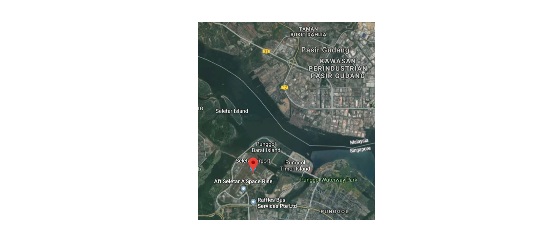Business Aviation caught in Seletar approach path dispute

map of Seletar Airport
A several-years dispute between Singapore and Malaysia is playing havoc with business aircraft operations at Seletar Airport (WSSL) in Singapore.
“In the last few months we have been inundated with NOTAMs and changes of rules and policies,” said Pat Dunn, Asia regional lead and former chair of NBAA’s International Operations Committee, who regularly flies Gulfstream 450s into WSSL.
The core of the problem is that the approach path (from the north) for Seletar’s Runway 21 overflies the Pasir Gudang region of Malaysia, which is home to a maritime cargo port, and an area in which the country would like to encourage further development, including more high-rise buildings.
Over the past decade, Singapore has lengthened the single Seletar runway and built a new passenger terminal with the intent to begin turbo-prop aircraft commercial operations.
Seletar also recently installed a long-promised instrument landing system (ILS), which Dunn said does not change the arrival process. “The visual approach to Runway 21 is mandated at 3.5-degree descent. The ILS is also 3.5 degrees, and we would have a fixed glide path if the ILS is allowed to be on at all times, VFR or IFR. With the required safety buffer, we are not descending any further than we did previously. Nothing has changed in any manner.”
Despite a 1974 letter of agreement between the nations that delegates the airspace over Malaysia’s southern province of Johor to Singapore air traffic control, the announcement that the ILS was to become operational triggered Malaysia to declare the skies over Pasir Gudang as restricted for military purposes.
Following a Jan. 8 meeting between Singapore’s Foreign Affairs Minister Vivian Balakrishnan and Malaysian counterpart Saifuddin Abdullah, the airspace ban was suspended, and the ILS turned off, until the impasse can be resolved.
“So we are back to ‘original conditions,’” said Dunn. With the exception that, as of Jan. 1, Seletar began a noise-abatement night curfew, restricting arrivals and departures from 10 p.m. – 7 a.m. local time. Also, in October 2018, Singapore declared Seletar a “schedules facilitated airport,” asking business aircraft operators to advise of their intended movements, “and if things get too busy they can deny access,” Dunn added.
Even “original conditions” represent a challenge to pilots, Dunn explained. “It is a very tight pattern that has been in use for 25 years flying into and out of WSSL. When departing on Runway 21, I must maintain flaps at 20 degrees until we are on right downwind, and maximum speed of 150 kts and 35-40 degrees of bank to maintain within the airport traffic area.”
Gary Moran, vice chair of the Asian Business Aviation Association and Singapore chapter lead said, “Singapore has taken many of us by surprise. However, I strongly believe we can get to a common sense approach and consensus that satisfies the local residents around the airport and the Singapore government. We have successfully engaged with governments in several countries across Asia on the importance of business aviation to their economies, and had some positive results.”








